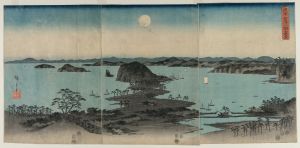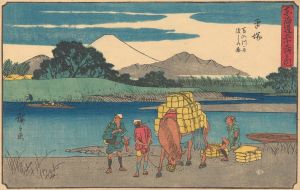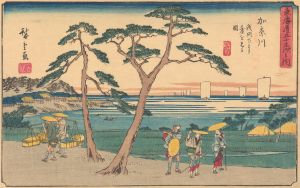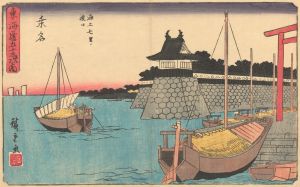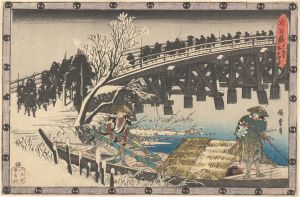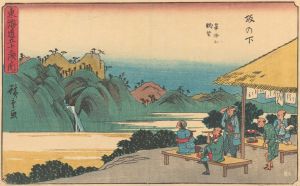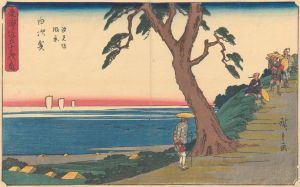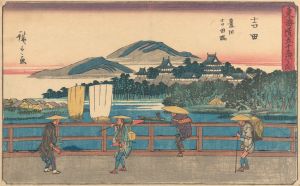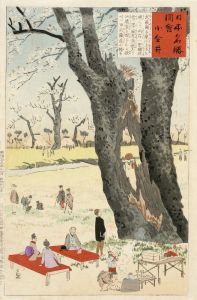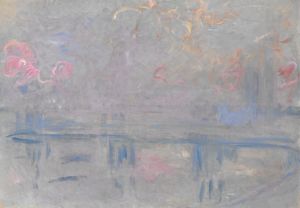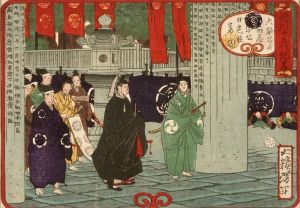
Kakegawa
A hand-painted replica of Andō Hiroshige’s masterpiece Kakegawa, meticulously crafted by professional artists to capture the true essence of the original. Each piece is created with museum-quality canvas and rare mineral pigments, carefully painted by experienced artists with delicate brushstrokes and rich, layered colors to perfectly recreate the texture of the original artwork. Unlike machine-printed reproductions, this hand-painted version brings the painting to life, infused with the artist’s emotions and skill in every stroke. Whether for personal collection or home decoration, it instantly elevates the artistic atmosphere of any space.
Andō Hiroshige, one of the most renowned ukiyo-e artists of the Edo period in Japan, created a series of woodblock prints that captured the beauty and essence of the Tōkaidō road, a vital route connecting Edo (modern-day Tokyo) to Kyoto. Among these works is "Kakegawa," a print from his celebrated series The Fifty-three Stations of the Tōkaidō (Tōkaidō Gojūsan-tsugi no Uchi), which was first published in the 1830s. This series is considered one of Hiroshige's masterpieces and a defining example of landscape art in the ukiyo-e tradition.
The "Kakegawa" print depicts the station of Kakegawa, one of the fifty-three official post stations along the Tōkaidō. These stations served as rest stops for travelers, offering lodging, food, and other services. Kakegawa, located in present-day Shizuoka Prefecture, was known for its scenic surroundings and its proximity to Kakegawa Castle, a prominent landmark of the region during the Edo period.
In Hiroshige's portrayal of Kakegawa, the composition emphasizes the natural beauty and rural charm of the area. The print features a wooden bridge spanning a tranquil river, with travelers crossing it, suggesting the constant movement and activity along the Tōkaidō. In the background, rolling hills and lush greenery create a serene atmosphere, characteristic of Hiroshige's ability to evoke a sense of place and mood. The use of soft colors and delicate gradations in the sky and landscape reflects Hiroshige's mastery of the ukiyo-e technique, particularly in capturing the subtleties of light and weather.
Hiroshige's The Fifty-three Stations of the Tōkaidō series was highly popular during his lifetime and remains influential in the history of Japanese art. The prints not only served as artistic representations of the Tōkaidō road but also as a form of travelogue, offering viewers a glimpse into the landscapes and daily life of Edo-period Japan. The "Kakegawa" print, like others in the series, exemplifies Hiroshige's skill in combining realism with poetic interpretation, making his work both visually appealing and culturally significant.
Today, Hiroshige's works, including "Kakegawa," are celebrated worldwide for their artistic and historical value. They provide insight into the Edo period's travel culture, regional geography, and aesthetic sensibilities. Original prints from the series are held in museum collections and private holdings, and they continue to be studied and admired for their contribution to the ukiyo-e tradition and Japanese art as a whole.







